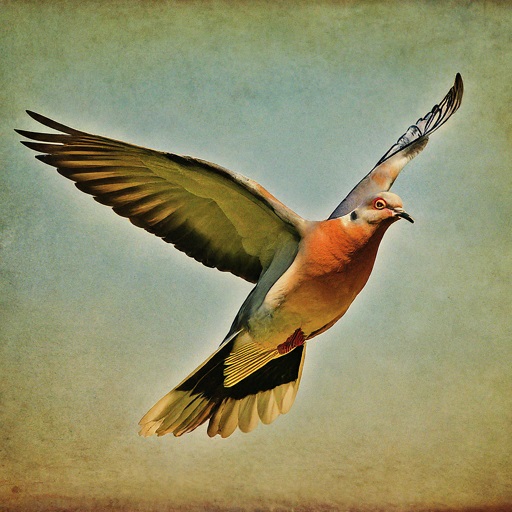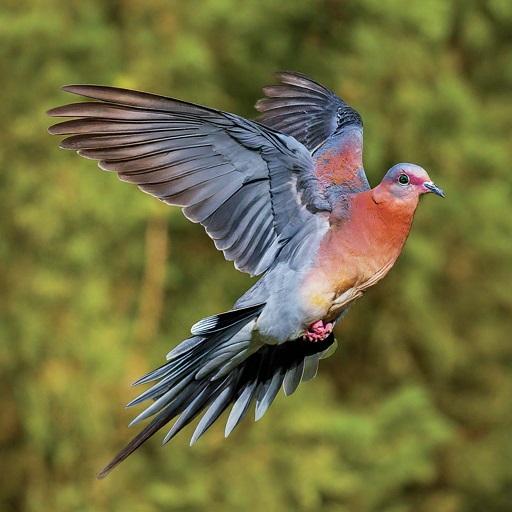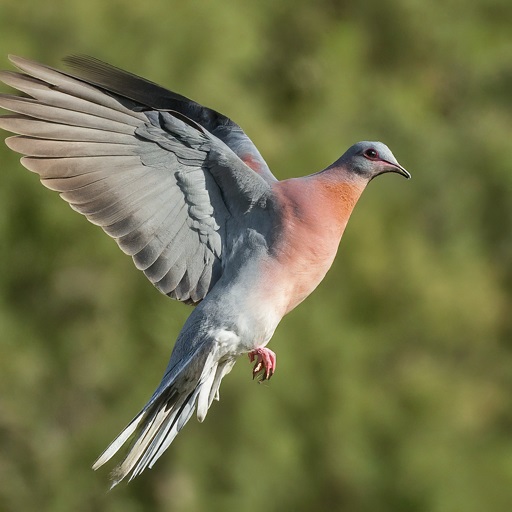What Were Passenger Pigeons Used For?
If you are wondering ‘what passenger pigeons were used for, ‘ you are in the right place. In this article, I will help you learn the rich history of passenger pigeons, their uses throughout time, and the factors that ultimately lead to their damage. Undoubtedly, A world filled with countless passenger pigeons soaring through the skies was amazing.
There was a time when they used to cast shadows over the entire landscape for an extended time. We can say that these birds dominated North America, numbering in billions, forming one of the largest avian populations in history. However, their story took a tragic turn, leading to their eventual Extinction, primarily driven by human impacts. Today, I will help you learn what passenger pigeons were used for and the legacies left behind by their Extinction. Therefore, without wasting time, let’s look at what passenger pigeons are used for.
What Were Passenger Pigeons Used For

Utilization by Indigenous People
Before the European settlers arrived in the land of the US, the indigenous tribes across North America had a deep connection with the passenger pigeon. Surprisingly, these indigenous tribes understood the logical importance of these birds & their role in maintaining the balance of nature. While doing my research, I encountered a popular study by the University of California revealing passenger pigeons were of high value for their need at that moment, providing the tribes with a vital food source.
Passenger Pigeons in Native American Art & Symbolism
Also, you should note that the significance of passenger pigeons was not limited to practical uses. When I was doing my research, I also got to know that indigenous tribes integrated this magnificent passenger pigeon into their cultural practices as well as their artwork. For instance, if you look at the history of the Cherokee people, you will find that they were believers of myths, and passenger pigeons would bring messages from the spirit world. Also, the Cherokee people used to employ feathers in their ceremonial attire. This spiritual connection with passenger pigeons shows how deeply they were embedded in the cultural fabric of indigenous communities.
Passenger Pigeons in Early American History
As European settlers began establishing colonies, they encountered many passenger pigeons that filled the sky. At that time, these pigeons became a very valuable resource for the settlers as a source of food & as a commodity for trade. When I looked at the Library of Congress’s historical records, I learned that passenger pigeons were a staple food for early European settlers. This is because passenger pigeons were easily hunted & their meat can provide them a reliable source of protein & sustenance for the colonies. Also, the abundance of passenger pigeons contributed significantly to the survival & expansion of these European settlements.
Passenger Pigeons in the Market Economy
Over time, as the young nation of the United States began to develop its economy, passenger pigeons started to play a prominent role in the market. I learned about a study by Harvard University revealing that the traits of passenger pigeons were one of the most profitable enterprises at that moment. At that time, their meat was in high demand for local concern and shipment to major cities on the east coast. Their feather was also used in many fashions & designs.
Passenger Pigeons as Entertainment
Unfortunately, when it comes to knowing about the commodification of passenger pigeons, it extends beyond their use of food. For example, pigeon shoots, a form of recreational hunting, became very popular during the 19th century. According to American historical reviews, these shoots involved releasing pigeons from traps and shooting them for sport. Even though this provided entertainment for many people, it also contributed to the decline of the passenger pigeon population to a greater extent.
Influence on Fashion & Design
As I told you earlier, the feather of a passenger pigeon was also highly sought after for fashion & design purposes. Passenger pigeons were popular for their soft & beautiful plumage that people used to make hats & garments, leading to the flourishing millinery trade. This kind of fashion industry was also booming at that moment & feathers from passenger pigeons were in high demand. This trend, coupled with other forms of exploitation, exerted immense pressure on the passenger pigeon population in North America.
Passenger Pigeons & the Industrial Revolution
You might already know that the 19th century was also marked by rapid industrialization, which brought significant changes in society and the surrounding environment. Unfortunately, the expansion of such industrial activities also took a huge toll on the passenger pigeon population. According to my research, the expansion of cities & industrial centers leads to continuous deforestation & habitat destruction for passenger pigeons.
Also, research by the University of Michigan reviews that urbanization & the growth of factories result in the loss of critical nesting & foraging areas for passenger pigeons, affecting their breeding behavior as well. This kind of change disrupted our little friend’s natural behavior patterns and their population. Unfortunately, the industrial revolution had far-reaching consequences for the environment as a whole & passenger pigeons were not immune to its effect.
Since the industries were burning coal & other fossil fuels, further releasing harmful pollutants into the air, it further impacted the air quality & ecosystem that pigeons relied on. Also, the rise of pollution contributed to sudden climatic changes, which further altered the weather pattern & disrupting the timing of migration for these magnificent passenger pigeons.
The Tragic Decline of Passenger Pigeons
Even though they were in vast numbers, the population of passenger pigeons began to plummet rapidly during the latter half of the 19th century. We have shared an in-depth article on ‘Why did the passenger pigeon go extinct’ for you to check. We have shared five major passenger pigeon extinction causes that you might be intrigued to know.
You should also note that there was no single culprit behind the passenger pigeon’s extinction. Various factors came together, pushing the species to the brink of Extinction. According to research from the Smithsonian Institute, they identified many key factors that led to the decline of passenger pigeons. Some of those include habitat destruction, unregulated hunting, and massive commercialization, playing a significant role in the passenger pigeon’s decline. The combination of these kinds put immense pressure on the passenger pigeon population leading to a sharp decline.
Conclusion
The passenger pigeon’s story serves as a cautionary tale about the fragility of our natural world & the consequences of unchecked exploitation. I have given my best to give you all the information around the question of what passenger pigeons were used for. From their once-vast numbers to their tragic Extinction, they have left an indelible mark on history & conservation.
As we continue to move forward, we must learn from their story and take proactive measures to protect & preserve the biodiversity that is still around us. I highly advise you to consider sharing this article if you find it helpful & easy to read. Your share will help many people be reminded of their responsibility as stewards of the earth.
We must ensure the passenger pigeon story is not just one of loss but also a powerful reminder of the need for sustainable practices & wildlife protection. If you have any other concerns regarding what passenger pigeons were used for, never mind, comment below. Check my other helpful guide on passenger pigeon facts on this website. See you in the next post, till then, take care & goodbye.





